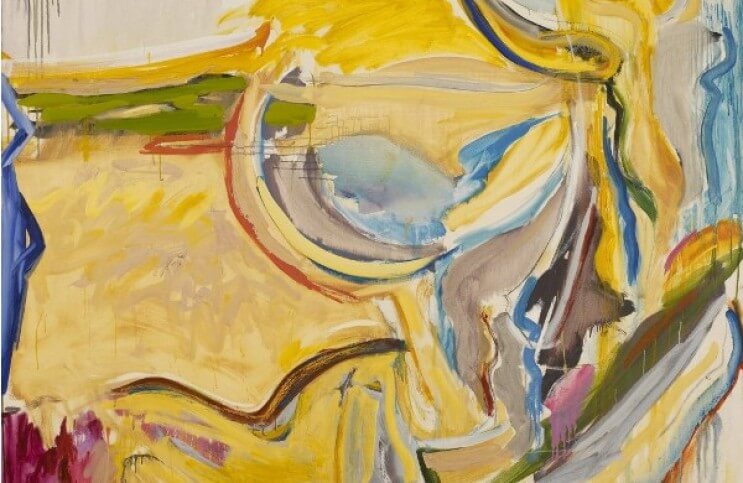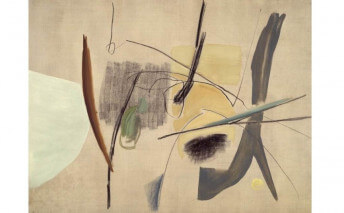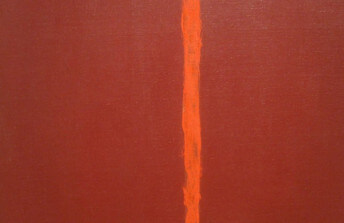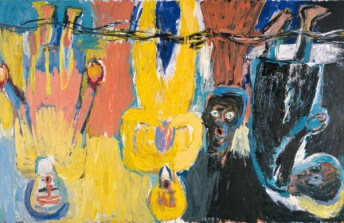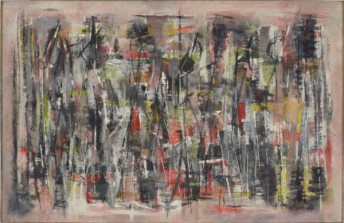Mary Abbott - One of the Most Important Artists of Abstract Expressionism
Feb 21, 2017
Many people first encountered the paintings of Mary Abbott in 2016, when she was one of a dozen painters included in the exhibition Women of Abstract Expressionism at the Denver Art Museum. To prepare for the exhibition, the museum considered the work of more than one hundred artists. Those they ultimately selected were chosen based on a combination of their lifelong commitment to abstraction and the profundity of their impact on the history of the movement. So how is it that an artist whose work is considered to have had a profound impact on one of the most important art movements of the past century is also somehow practically unknown to contemporary audiences? Based on interviews Abbott has given, things like having her accomplishments touted, getting credit for her influence, and being recognized for her contributions to art history are of little importance to her. Still active in her studio today in her mid 90s, Abbott seems content to focus on what she believes is most important: making art; and to let irrelevancies like reputation handle themselves.
Google Gets It
Not to take anything away from the humility with which Mary Abbott conducts herself, but we think at minimum a couple paragraphs should be devoted to acknowledging at least one specific effect this artist had on the course of modern art history. That is her impact on the oeuvre of the painter Willem de Kooning. To see for yourself how profoundly Abbott influenced De Kooning, simply repeat the following test we conducted during our research: do a Google image search of a painting by Abbott called Lucy. When we did this search, based on the aesthetic qualities of that painting Google suggested the phrase abstract expressionism de kooning and offered a selection of visually similar images consisting almost entirely of paintings by Willem.
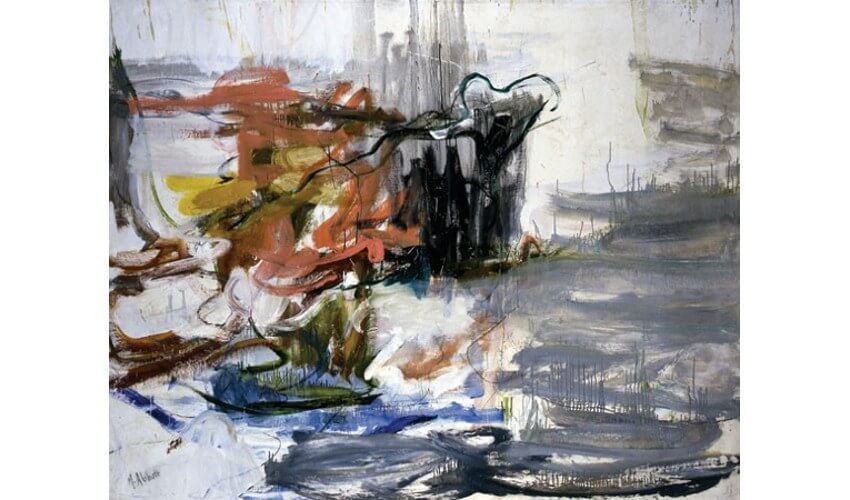 Mary Abbott - Oisins Dream, 1952, Oil paint and oil stick on canvas, 68 x 84 in, Photo courtesy of the Denver Art Museum, © Mary Abbott
Mary Abbott - Oisins Dream, 1952, Oil paint and oil stick on canvas, 68 x 84 in, Photo courtesy of the Denver Art Museum, © Mary Abbott
In a fraction of a second Google realized what it took the art world more than half a century to figure out. Mary Abbott was a close confidant of, and inspiration to, Willem De Kooning. She frequently hosted him and other major painters of the New York School at her home for discussions and meals that she would prepare. She would then afterward often retreat with De Kooning to her studio. Of course, De Kooning is now known for painting one of the most expensive painting ever sold, an abstract landscape called Interchange, painted in 1955. Side by side comparisons of the first abstract landscapes that Abbot painted in the early 1950s show a style and palette stunningly similar to that which De Kooning adopted years later, beginning with the series to which Interchange belongs.
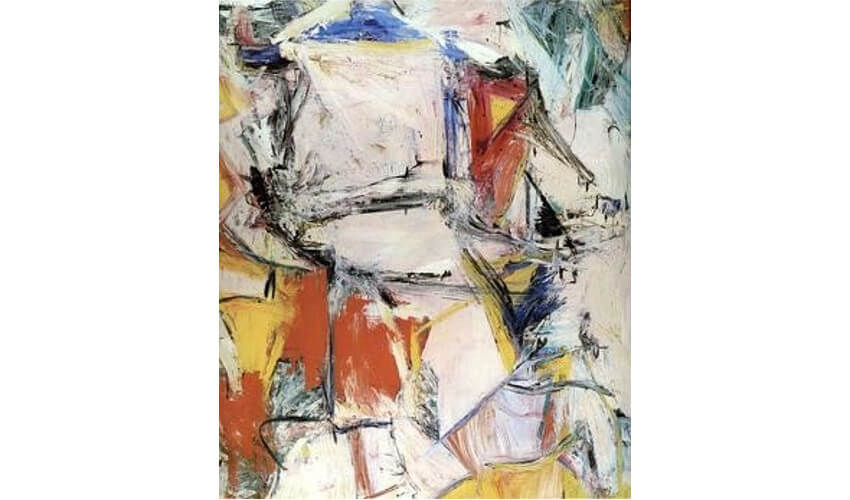 Mary Abbott - Willem de Kooning, Interchange, 1955, Oil on canvas, 79.0 in × 69.0 in, from the private collection of Kenneth C. Griffin, © Mary Abbott
Mary Abbott - Willem de Kooning, Interchange, 1955, Oil on canvas, 79.0 in × 69.0 in, from the private collection of Kenneth C. Griffin, © Mary Abbott
Drawing Imagination
Perhaps what stops Mary Abbott from making a big deal about who influenced who is the fact that she sees herself as part of a larger phenomenon. From her perspective, the ideas and practices that made their way through the community of likeminded artists to which she belonged do not belong to any one ego. They are the products of a common consciousness, and should be openly and fruitfully explored by anyone and everyone who feels connected to them. That is the essence of the philosophy she learned in 1948, when she attended a sort of anti-school founded that year called The Subject of the Artist School.
The founders of the Subject of the Artist School were William Baziotes, Mark Rothko, David Hare, Robert Motherwell and Barnett Newman. They held lectures by artists like Jean Arp, Adolph Gottlieb and Ad Reinhardt, and allowed anyone to attend so long as they were willing to forget what they had been taught before and open themselves up to entirely new ways of seeing their art. Although the school closed just one year later, it re-manifested almost immediately in a nearby loft as The Club. It was there among those artists that Abbott learned, as she says, “to draw imagination.”
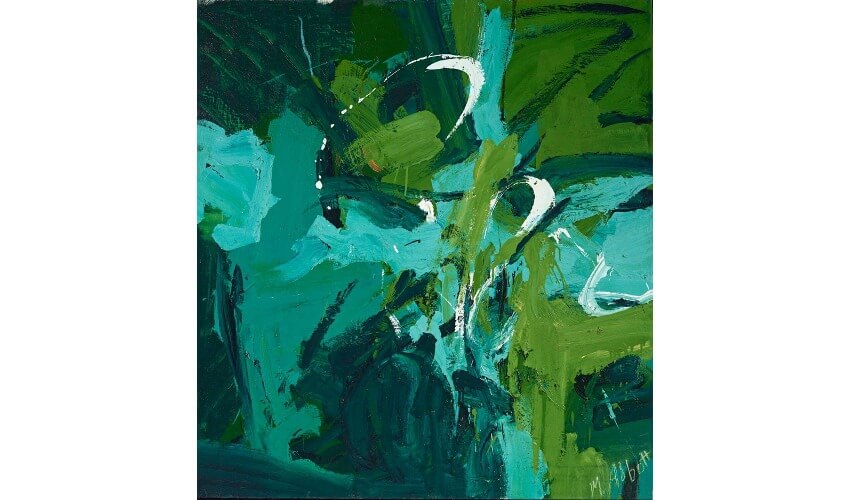 Mary Abbott - All Green, 1954, Oil on linen, 49 x 45 in., Courtesy of Denver Art Museum, © Mary Abbott
Mary Abbott - All Green, 1954, Oil on linen, 49 x 45 in., Courtesy of Denver Art Museum, © Mary Abbott
Gesture and Color
The innumerable pieces Mary Abbott has created over the course of her career are among the most stunning examples we have of the majestic potential of gesture and color. They embody energy and mood. Taking inspiration from the colors she encountered in nature she internalized the feelings those colors evoked in her and gave her self to the work of expressing those feelings in paint. She was free from any other impulse other than to explore, as she put it, “The intensity of Living Nature through myself––using the medium, paint, color and line defining the poetry of living space.”
Despite having her works exhibited in the key galleries associated with Abstract Expressionism, Mary Abbott has still to this day had a restrained exhibition history. Perhaps her freedom and humility, along with her devotion to learning and working, conspired somehow to limit the attention the market has paid to her work. That could be perceived as a loss. But that she has exhibited infrequently is also a gift. We are now realizing the wealth of work Abbott has created, and receiving fascinating insight into unknown facets of Abstract Expressionism. And for the first time many of us are getting a chance to enjoy the deep emotion and beauty of a hidden master of our time.
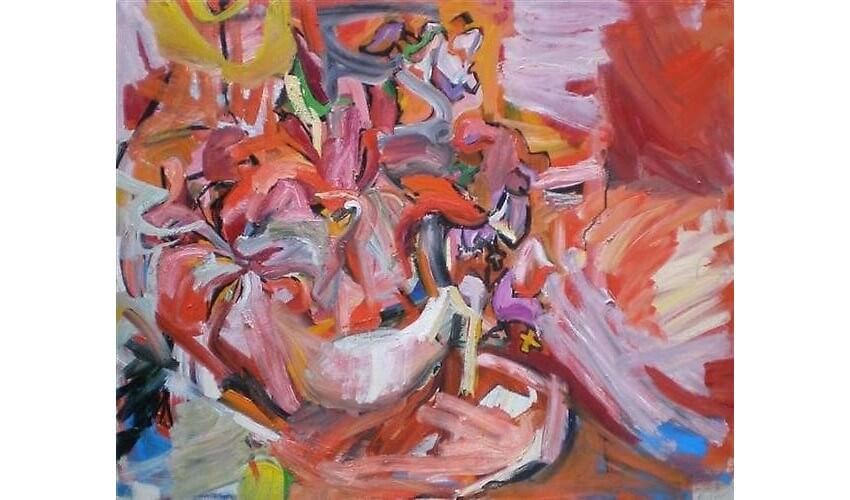 Mary Abbott - Untitled, Haiti, 1953, Oil on canvas, 38 x 48 in., © Mary Abbott
Mary Abbott - Untitled, Haiti, 1953, Oil on canvas, 38 x 48 in., © Mary Abbott
Featured image: Mary Abbott - Lucy, oil on canvas, 71 x 75 inches, image courtesy of Vallarino Fine Art, New York, © Mary Abbott
All images used for illustrative purposes only
By Phillip Barcio
